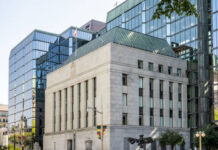The euro enjoyed its strongest daily gain in a month as upbeat GDP numbers out of Europe lifted sentiment for the region. The pound came under pressure though after UK inflation missed expectations, while the US dollar remained below session highs despite US producer prices rising more than anticipated.
Stronger-than-expected growth in Europe’s largest economy during the third quarter set the tone for today’s European session as investors were once again drawn to the improving outlook for the region. German GDP was up 0.8% between the second and third quarters, beating forecasts of 0.6% growth. The year-on-year rate was in line with estimates at 2.3%. Italian GDP also came in above expectations and strong growth in central and eastern European countries added to the overall positive tone, lifting the euro.
The single currency jumped to a near three-week high of $1.1764, and was last trading up 0.7% on the day at $1.1753. It was also up sharply against the yen and the pound at 133.45 and 0.8968 respectively.
The pound’s losses were broad based as the British currency dipped after weaker-than-expected inflation data. Headline inflation in the UK was unchanged at 3.0% y/y in October, below forecasts that it would rise to 3.1%. Core CPI missed estimates too, coming in at 2.7%, the same rate as in September, instead of the expected 2.8%. Producer prices also rose less than expected, suggesting that inflation in the UK has peaked as the effects of last year’s depreciation of the pound start to fade.
Sterling hovered around $1.31 after reclaiming the level yesterday. Its losses from the data were limited with traders cautious as British MPs began debating the EU Withdrawal Bill. The legislation is crucial to ensure a smooth transition after Brexit but with only a small working majority, the prime minister, Theresa May, could struggle to pass the bill as up to 10 Conservative MPs are reportedly planning to vote against it. The bill has a long way to go however with the parliamentary scrutiny expected to take weeks.
There was little reaction in forex markets to a panel discussion by the world’s four most important central bank chiefs at an ECB conference in Frankfurt today. Fed Chair Janet Yellen, ECB President Mario Draghi, Bank of England Governor Mark Carney and Bank of Japan Governor Haruhiko Kuroda did not comment on monetary policy but defended their communications policy, with Draghi saying "Forward guidance has become a full-fledged monetary policy instrument". Draghi and Carney will be speaking again separately later in the week.
Fed speakers also failed to attract much attention. In an interview with the Financial Times, Dallas Fed President and voting FOMC member, Robert Kaplan, said he was "actively considering" supporting a rate hike in December. In contrast, St. Louis Fed President James Bullard, who does not get to vote until 2019, was typically dovish, saying current rates are likely to remain appropriate in the near term.
The greenback had a lacklustre session as the US currency retreated after briefly touching a high of 113.91 yen. Better-than-expected producer prices only managed to briefly halt the dollar’s slide, with dollar/yen steadying around 113.50 before resuming downwards to hit an intra-day low of 113.31. Declining US treasury yields weighed on the dollar but boosted gold which spiked above $1280 an ounce.
US PPI for final demand rose by a bigger-than-forecast 0.4% month-on-month in October versus estimates of 0.1%. The annual rate accelerated to 5½-year high of 2.8% from 2.6% in September. The core rate also beat expectations, rising by 2.4% y/y instead of the anticipated 2.3%. Attention now shifts to tomorrow’s CPI and retail sales figures.
In other currencies, the Australian and New Zealand dollars remained pressured against the greenback. The aussie was stuck near its earlier 4-month low of $0.7607, while the kiwi was on track for a fourth straight day of losses, hitting a 2-week low of $0.6843.














